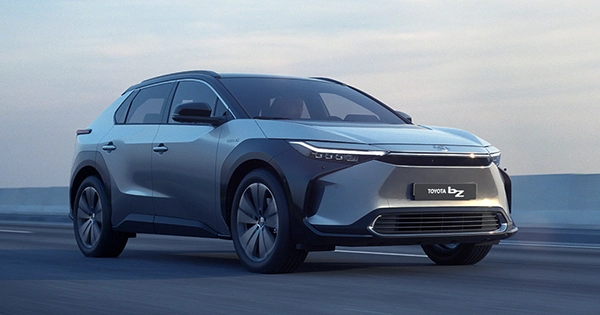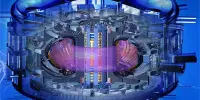At the New York International Auto Show this week, Chrysler introduced the Airflow Graphite Concept SUV, an all-electric crossover with 22-inch wheels, a sleek profile, and autonomous driving technologies that might be a glimpse into the automaker’s future. According to Chrysler, the SUV will have a range of up to 400 miles on a fully charged battery and will have fast-charging capability. The Stellantis brand also boasted a long list of technological features in the concept car, including the STLA AutoDrive system with Level 3 autonomous driving capabilities from the automaker.
Because this is merely an idea, some caution should be exercised when studying its specifications. This sporty design might help define the direction for parent firm Stellantis’ $35 billion investment in bringing new electric vehicles to market, as Chrysler plans to introduce its first EV in 2025 and become a totally electric brand by 2028. Chrysler has been a late adopter of electric vehicles, but Stellantis plans to launch more than 75 battery-electric models and sell five million EVs worldwide by 2030. The company, which is a joint venture between Fiat Chrysler Automobiles and PSA Group, does not offer completely electric vehicles. There are just three plug-in hybrids in its electrified lineup: the Chrysler Pacifica Hybrid Minivan, the Jeep Wrangler 4xe, and the Jeep Grand Cherokee 4xe.
Chrysler CEO Chris Feuell stated in a statement that the design “represents the various possibilities on our brand’s route to an all-electric future.” The Airflow Graphite Concept appears to be more aggressive and energetic than the Chrysler Airflow Concept, which debuted at CES in January. Galaxy Black exterior paint, Cyprus Copper accent colors, a panoramic sunroof, and a full suite of cutting-edge technology are all included on this “alter-ego version.”
The Airflow idea is a far cry from Chrysler’s original Airflow, a streamlined, more air-resistant car built between 1934 and 1937. The name does indicate that the company is attempting to tap into that era’s creative thought, but hopefully with better commercial success. The technology within the idea is part of Stellantis’ bigger aim to make $22.5 billion per year from software in its vehicles that can sell items and services to passengers and drivers.
The concept includes three areas that are currently being developed: an underlying electrical and software architecture known as STLA Brain, software known as the SmartCockpit that is being developed in collaboration with Foxconn to deliver applications to the driver such as navigation, voice assistance, an e-commerce marketplace, and payment services, and finally, an automated driving system known as “AutoDrive” that is being developed with BMW.
The STLA SmartCockpit, according to the manufacturer, “enables an extension of digital, work, and home settings, all in sync to offer a tailored experience for every passenger.” Over-the-air upgrades are possible because to the STLA Brain platform, which “delivers new and enhanced features and functionalities that enrich and improve the car throughout the ownership experience.”















